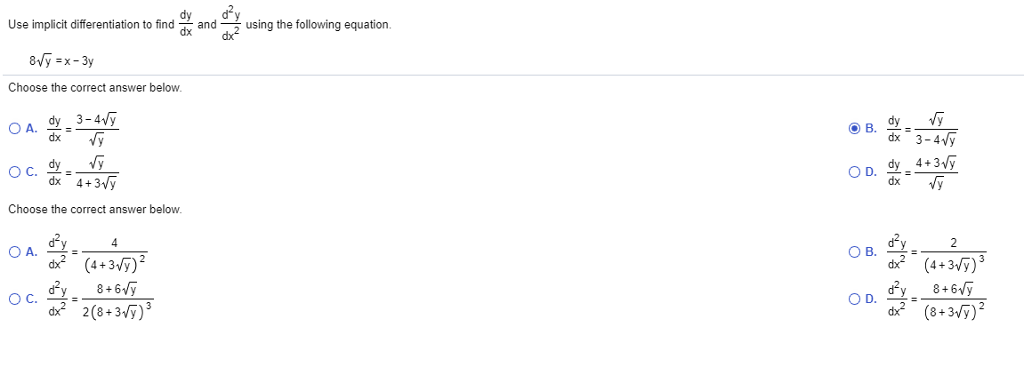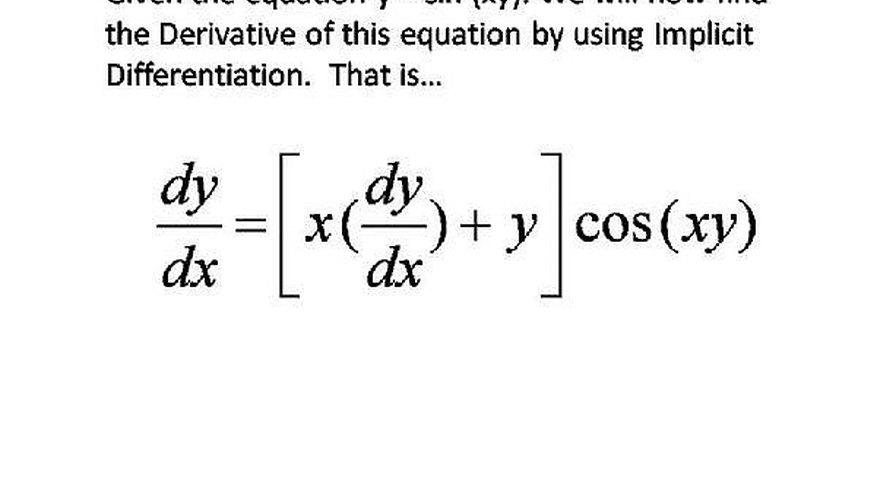Have you ever wondered how we measure change? How can we quantify the speed at which a car accelerates, the rate at which a balloon inflates, or the intensity of a growing tumor? The answer lies in a seemingly simple mathematical expression: dy/dx. More commonly known as “dy over dx,” this symbol, often appearing in calculus textbooks, represents the very essence of change. It’s a powerful tool, a key to understanding the dynamism of our world, and a testament to the ingenuity of human thought.

Image: www.chegg.com
This journey will delve into the captivating world of dy/dx, unlocking its secrets and showcasing its applications in an array of fields. We’ll uncover its historical roots, explore the fundamental concepts it embodies, and witness its remarkable impact on our understanding of the universe. Prepare to be amazed as we unlock the magic woven within this seemingly simple fraction.
Decoding the Mystery of dy/dx
At its core, dy/dx represents the “derivative” of a function. But what exactly does that mean? Imagine a graph, a visual representation of a function, where the y-axis represents the output and the x-axis represents the input. The derivative, dy/dx, tells us the instantaneous rate of change of the output (y) with respect to the input (x). In simpler terms, it measures the slope of the tangent line at any point on the graph.
For instance, consider a car traveling down a highway. Its position is a function of time. The derivative of this function, dy/dx, represents the car’s velocity, or how fast it’s moving at any given moment. This is why dy/dx is often referred to as the “instantaneous rate of change.”
A Glimpse into the History of dy/dx
The concept of dy/dx, while seemingly modern, has roots that stretch back to ancient times. The Greeks, with their keen eye for geometry, explored concepts of tangents and areas, laying the groundwork for calculus.
In the 17th century, two brilliant mathematicians, Isaac Newton and Gottfried Wilhelm Leibniz, independently developed the foundations of modern calculus, paving the way for the formalization of dy/dx. Newton used the dot notation, representing the derivative as “ẏ”, while Leibniz introduced the notation we use today – dy/dx. He envisioned the derivative as a ratio of two infinitesimally small quantities, a perspective that emphasizes the idea of change happening over an infinitely small interval.
Unlocking the Power of Dy/dx: Applications Across Disciplines
While calculus may initially seem abstract, its applications are vast and profoundly impact our lives. Here are a few examples:
1. Engineering and Physics:
-
Designing bridges and buildings: Dy/dx helps engineers understand the stresses and strains on structures, ensuring their stability and safety.
-
Optimizing rocket trajectories: Using derivatives, engineers calculate optimal launch angles and fuel consumption for spacecraft, paving the way for space exploration.
2. Economics and Finance:
-
Modeling economic growth: Economists use dy/dx to analyze rates of inflation, growth, and change in market conditions.
-
Predicting stock prices: Modern financial models incorporate derivatives to analyze market trends and forecast potential fluctuations in stock prices.
3. Medicine and Biology:
-
Understanding drug absorption: Derivatives help researchers model how drugs are absorbed into the body and study their effects on various organs.
-
Analyzing population growth: Biologists use derivatives to study the rate of population growth and understand factors influencing the dynamics of different ecosystems.
4. Technology and Innovation:
-
Developing artificial intelligence: Derivatives play a crucial role in machine learning algorithms, enabling computers to learn from data and make predictions.
-
Optimizing computer algorithms: Developers use derivatives to improve the efficiency and accuracy of algorithms, enhancing the performance of software and hardware systems.

Image: sciencing.com
Expert Insights and Actionable Tips
To truly grasp the power of dy/dx, it’s essential to understand that it’s not just a mathematical formula; it’s a way of thinking, a lens through which we can view the world. Here are some tips from experts in the field:
-
Embrace Visualization: Don’t just focus on the symbolic representation. Visualize the graphs and the concept of change they embody. This can help you grasp the intuition behind the derivative.
-
Practice, Practice, Practice: The best way to learn calculus is to practice solving problems. Start with simple examples and gradually move towards more complex ones.
-
Don’t be Afraid to Ask Questions: If you encounter any difficulties, don’t hesitate to ask questions. There are many resources available, including textbooks, online tutorials, and even fellow students who can help you along the way.
Dy Over Dx
The Unending Journey with dy/dx
As we conclude our exploration of dy/dx, we’ve only just scratched the surface of its vast potential. It is a tool that unlocks the secrets of change, a bridge between the static and the dynamic. From understanding the physics of the universe to predicting the behavior of complex systems, dy/dx empowers us to unravel the intricate tapestry of our world.
We encourage you to continue this journey of discovery. Explore further resources, delve deeper into the concepts, and engage in discussions with other passionate learners. Keep asking questions, and never stop seeking a deeper understanding of the world around us. The magic of dy/dx awaits!





